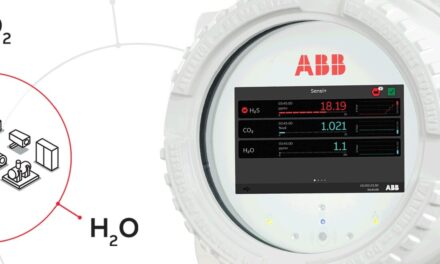Petrochemical refineries are increasingly being called on to install continuous emission monitoring systems (CEMS) to collect, record and report data to comply with air emission standards outlined by the Environmental Protection Agency (EPA) as well as local and state air quality districts. Spurring this requirement are stricter regulations, often stimulated by air quality districts, which expand the types and capacities of equipment, as well as the addition of chemical compounds, that must be monitored. In addition, facilities with decades-0ld monitoring systems are now facing the need to retrofit or replace obsolete components.
This is putting a spotlight on CEMS, as refineries eager to keep costs down wrestle with how to meet compliance requirements as inexpensively and efficiently as possible, while still protecting the facility against regulatory fines. Also at top-of-mind is keeping plant personnel on higher revenue generating priorities and off of maintenance and operational duties.
“CEMS are used for environmental compliance only. They do not make the refinery money,” says Bill Deutschlander of Eichleay, a full service, multi-discipline facilities design and engineering firm for petrochemical and other industries. “So the least amount of money you can spend on the system and remain compliant is in the refinery’s best interest.”
As a member of the instrumentation and controls group, Deutschlander has decades of experience working with laboratory and inline process analyzers, including CEM systems. The difficulty with that concept, says Deutschlander, is that a poorly designed CEM system with the least expensive components can cost much more in the long run in ongoing upkeep and maintenance.
“A lot of [CEMS] providers want to purchase the lowest-priced equipment to install in their system,” adds Deutschlander. “That might get you a lower installed cost, but you want quality system components so you minimize the amount of maintenance required.”
In addition, if the system fails to record data, even for short periods of time or is not properly validated every 24 hours, regulators can levy significant penalties against the facility that can range from $50,000 for a single notice, up to multiple hundreds of thousands of dollars over time.
CEMS integration
Housed in shelters in close proximity to each piece of equipment monitored, CEM systems continuously transport samples of exhaust gases that have been conditioned to a rack of analyzers. Reporting software is also included, and the entire system is often tied into the refinery’s network.To accomplish this task, CEMS involve probes, analyzers, pumps, chillers and other components available on the open market. As such creating these types of systems is a matter of integrating a variety of products from different manufacturers.
Once integrated, by EPA rule, CEMS must be validated once every 24 hours to ensure the analyzer has not drifted off its calibrated accuracy by more than typically 10%. CEMS operate 24 hours a day, 365 days a year and must also have an uptime of 95% to stay in compliance and avoid fines. For these reasons, ongoing maintenance is unavoidable for facilities that expect to remain in compliance.
Stricter regulations spur installations
For one west coast refinery, new regulations necessitated the installation of CEM systems on four mid-sized process boilers previously monitored by more basic oxygen monitors. The new guidelines from the local air quality district addressed emissions of nitrogen oxide (NOX) and carbon dioxide (CO2) from boilers, steam generators, and process heaters.
“We used to have different type of measurements on these process heaters, but that was no longer acceptable to the Bay Area and we had to install a full-blown CEMS,” says Ken Sullivan, an engineer for analyzers and instrumentation at the refinery.
According to Sullivan, the project was put out to bid and was ultimately awarded to Cemtek Environmental, a leading supplier of custom engineered CEMS. Cemtek is a system integrator of extractive, dilution and mercury CEMS designed to monitor compound such as NOX, CO2, oxygen, sulfur and others. The refinery was already familiar with Cemtek, having worked with the company on several past projects.
“They came in with the best proposal,” says Sullivan. “In our experience, they really try and do the right thing for us. If you put a spec together and they have a better idea, they will point it out based on their past experience.”
Sullivan adds that Cemtek was able to install and complete initial testing of the system prior to the deadline and within cost.
Reducing maintenance requirements
There is routine maintenance that has to be done on these systems. Many plants find they must assign additional man hours to take care of the equipment.
“If plant personnel have to spend more and more time on the CEMS, usually what that means is it’s going to take them away from working on profit generating equipment,” says Deutschlander. “So properly designed process analyzers will help them ultimately have a much higher return on the dollar by making the process more efficient.”
Exacerbating the situation is the continuing exodus of experienced personnel to retirement, leaving a younger generation of engineers with limited training on existing systems.
“You’re seeing more outsourcing now because refineries don’t have enough personnel to do the maintenance,” says Deutschlander.
To address this, integrators like Cemtek provide field service maintenance services. These can range from yearly visits to tune-up the system prior to annual re-certification, quarterly visits to maintain the system on a more regular basis, or even on-site services with daily technician visits. Technology will also play a key role in reducing maintenance requirements. Today’s emission systems now deliver remote diagnostics that allow technicians to review how the system is operating and conduct preventative diagnostics through a web browser, removing the need for regular or unnecessary on-site visits.
“You can maintain more [process analyzer] systems with fewer personnel using remote diagnostics,” explains Deutschlander. “The more information you can view remotely will lower the total overall cost of maintenance.”
For more information about Cemtek Environmental, call: (714) 437-7100; e-mail: sales@cemteks.com or visit www.cemteks.com


